
Academic Communication in English Literature Review
Academic Communication in English Literature Review
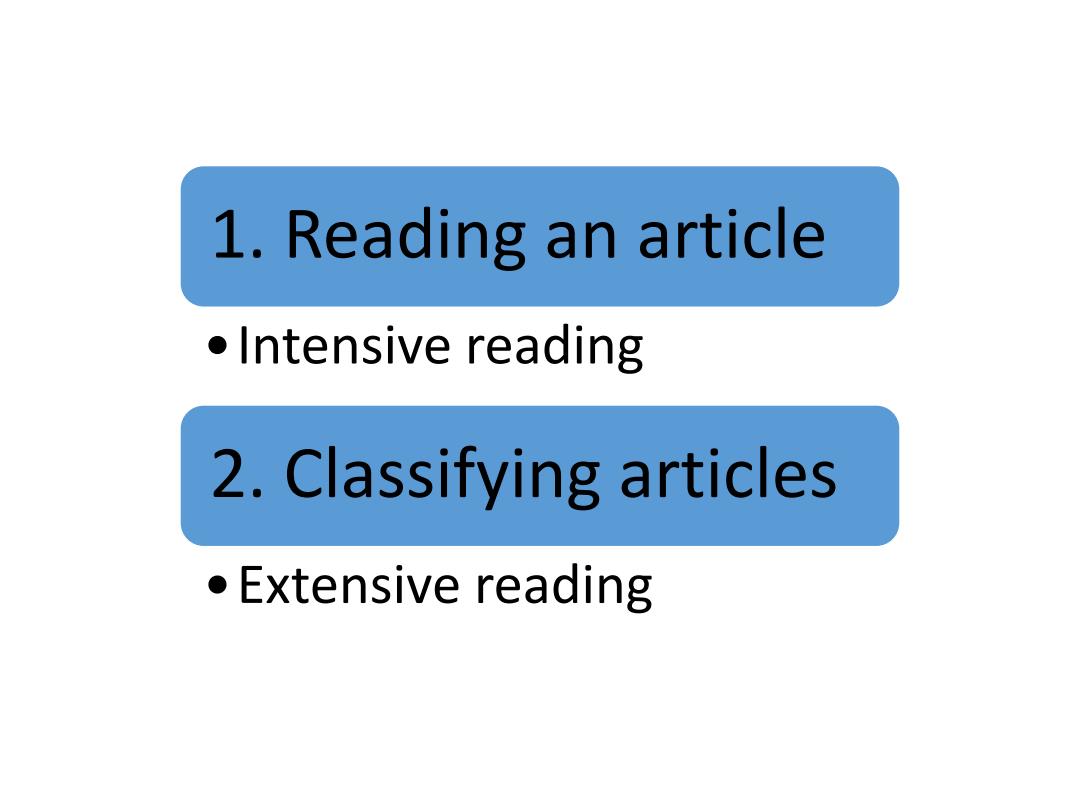
1.Reading an article ●Intensive reading 2.Classifying articles Extensive reading
1. Reading an article •Intensive reading 2. Classifying articles •Extensive reading

ew focuses (intensive reading for contents Compare with an introduction 01 The definitions of key terms or concepts related to your topic 02 The prevailing theories that underlie the research problem 03 The description of the studies that support the current theories 04 The major findings in the area 05 The main controversies or limitations of the work in the area 06 A brief summary to conclude relevant review The rationale and purpose of the proposed study Example P48-55
Review focuses (intensive reading for contents) Compare with an introduction 01 02 03 04 05 06 07 The definitions of key terms or concepts related to your topic The rationale and purpose of the proposed study The prevailing theories that underlie the research problem The description of the studies that support the current theories The major findings in the area The main controversies or limitations of the work in the area A brief summary to conclude relevant review Example P48-55

⑧ Argument A Argument B Q My research
Argument A Argument B ………….. My research
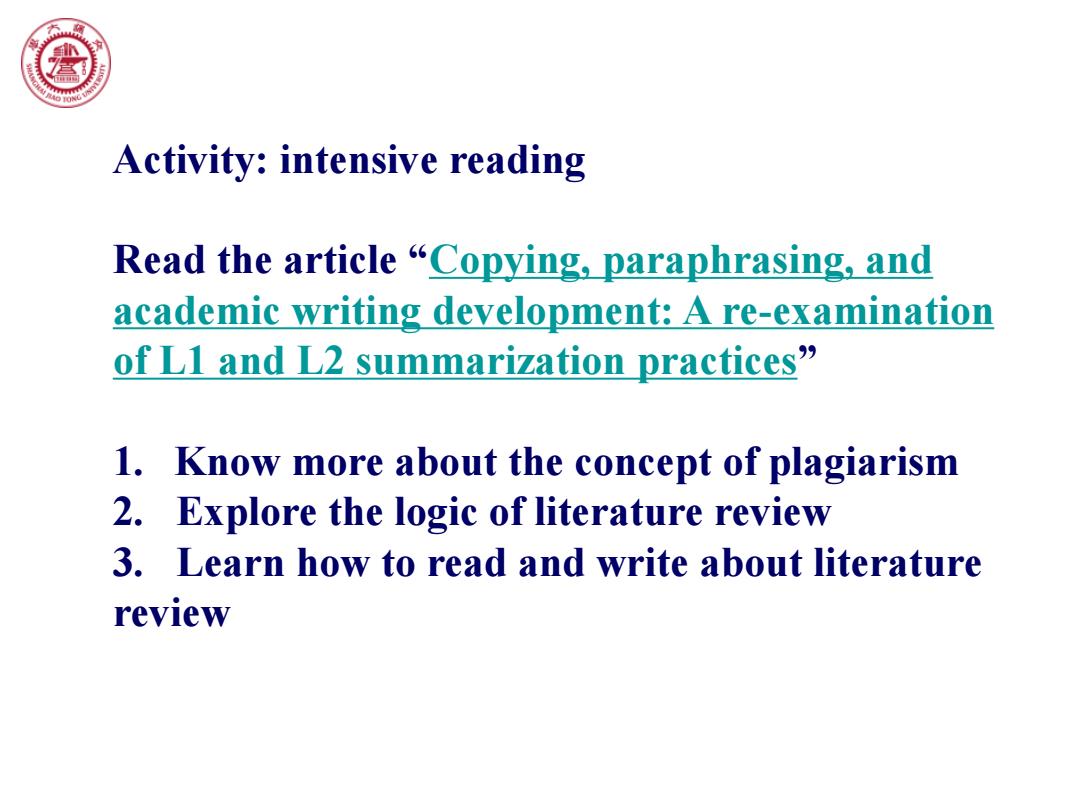
Activity:intensive reading Read the article "Copying,paraphrasing,and academic writing development:A re-examination of Ll and L2 summarization practices" 1.Know more about the concept of plagiarism 2.Explore the logic of literature review 3.Learn how to read and write about literature review
Activity: intensive reading Read the article “Copying, paraphrasing, and academic writing development: A re-examination of L1 and L2 summarization practices” 1. Know more about the concept of plagiarism 2. Explore the logic of literature review 3. Learn how to read and write about literature review
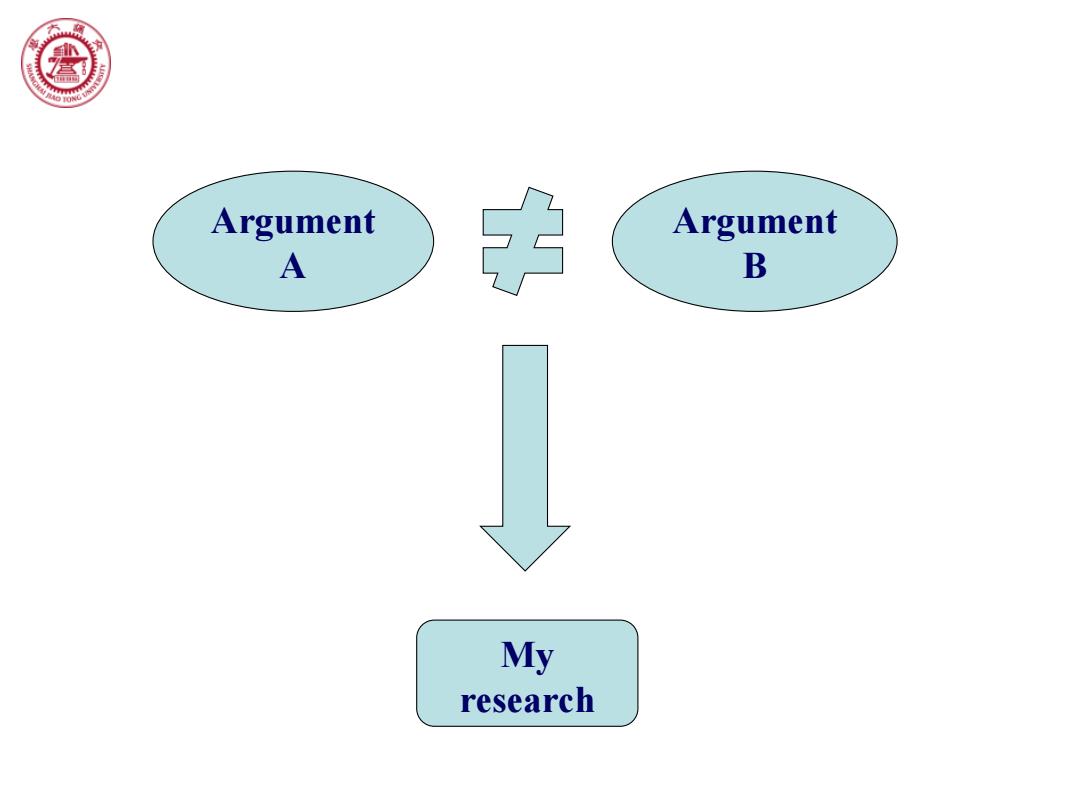
⑧ Argument Argument A 中 B y research
Argument A Argument B My research
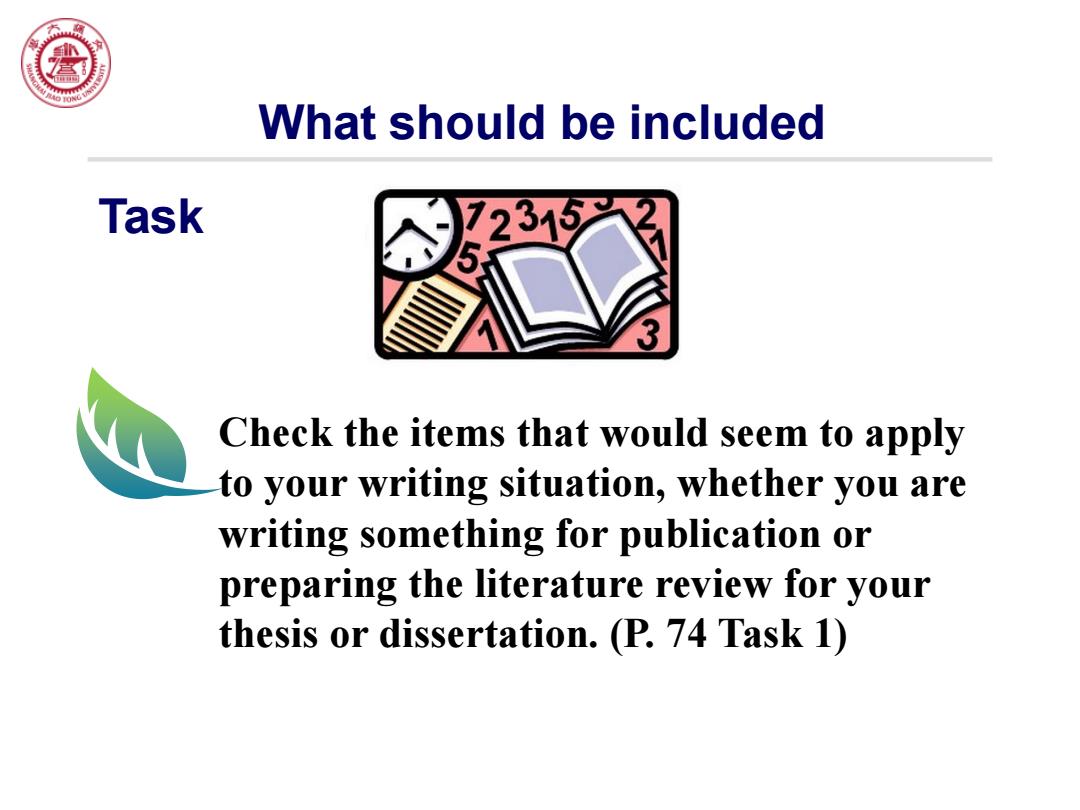
图 What should be included Task Check the items that would seem to apply to your writing situation,whether you are writing something for publication or preparing the literature review for your thesis or dissertation.(P.74 Task 1)
What should be included Check the items that would seem to apply to your writing situation, whether you are writing something for publication or preparing the literature review for your thesis or dissertation. (P. 74 Task 1) Task
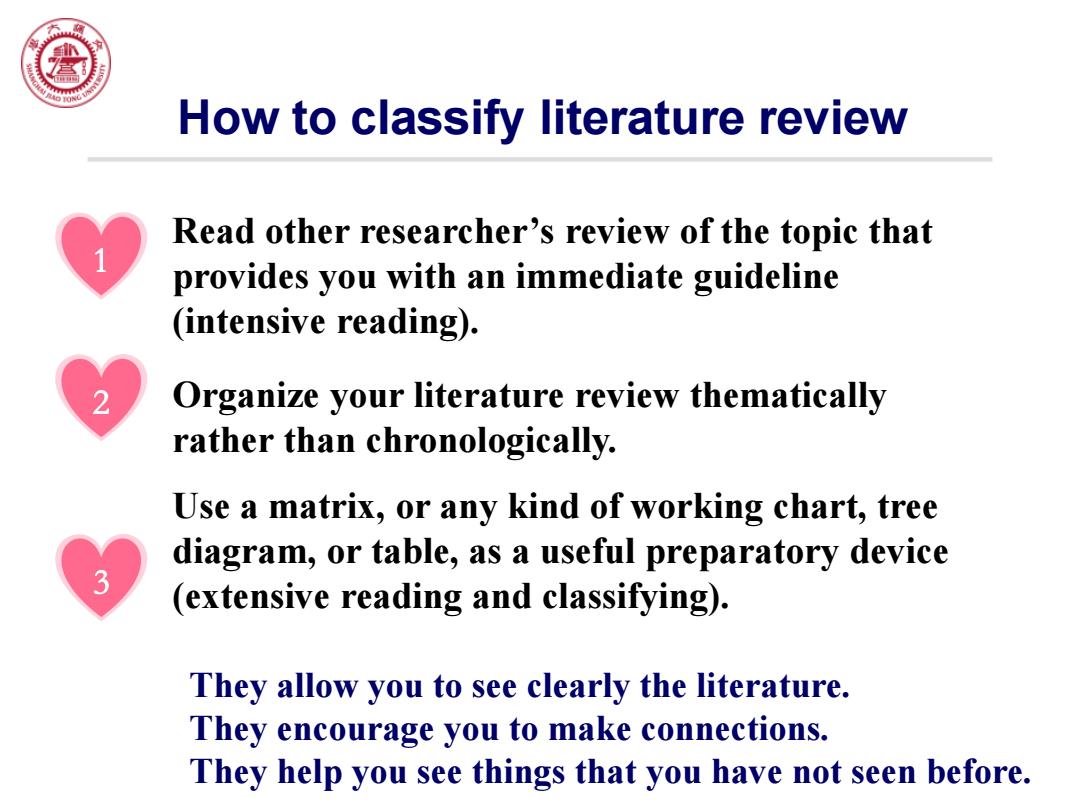
How to classify literature review Read other researcher's review of the topic that provides you with an immediate guideline (intensive reading). Organize your literature review thematically rather than chronologically. Use a matrix,or any kind of working chart,tree diagram,or table,as a useful preparatory device 3 (extensive reading and classifying). They allow you to see clearly the literature. They encourage you to make connections. They help you see things that you have not seen before
How to classify literature review Read other researcher’s review of the topic that provides you with an immediate guideline (intensive reading). Organize your literature review thematically rather than chronologically. Use a matrix, or any kind of working chart, tree diagram, or table, as a useful preparatory device (extensive reading and classifying). They allow you to see clearly the literature. They encourage you to make connections. They help you see things that you have not seen before. 3 2 1
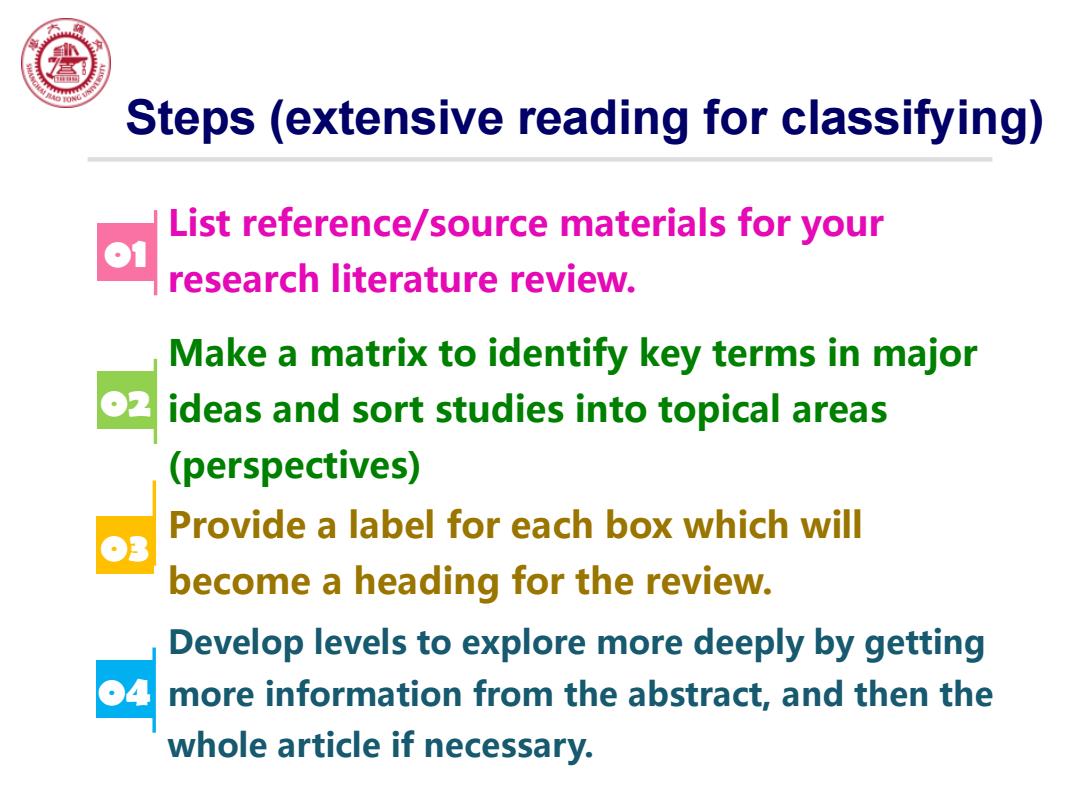
Steps (extensive reading for classifying) List reference/source materials for your research literature review. Make a matrix to identify key terms in major ⊙2 ideas and sort studies into topical areas (perspectives) Provide a label for each box which will become a heading for the review. Develop levels to explore more deeply by getting ⊙4 more information from the abstract,and then the whole article if necessary
Steps (extensive reading for classifying) 02 03 04 01 List reference/source materials for your research literature review. Make a matrix to identify key terms in major ideas and sort studies into topical areas (perspectives) Provide a label for each box which will become a heading for the review. Develop levels to explore more deeply by getting more information from the abstract, and then the whole article if necessary